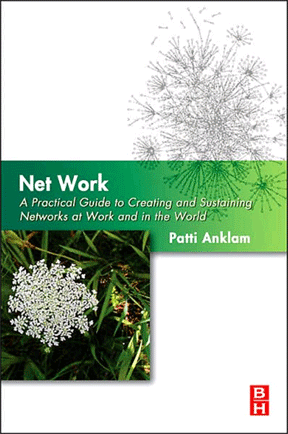I have written about the Three KMs:
- Big KM is about enterprise-wide knowledge management programs that start with a top-down strategy and seek to reach the farthest corners of the corporation
- Little KM is about the quiet application of KM methods to business problems in a way that just makes sense
- The third KM, personal KM, is about about the conscious development of habits for identifying, locating, and processing knowledge and personal connections
Knowledge-based businesses, like professional services firms, were very quick to take up “Big KM,” beginning with content management, but were quickly joined by many early adopters, a large number of whom found their way to APQC. Best practices have been the province of APQC (“Make Best Practices Your PracticesSM) since 1977; Carla O’Dell of APCQ wrote one of the first books about knowledge management in 1998 (with C. Jackson Grayson, founder of APQC): If Only We Knew What We Know: The Transfer of Internal Knowledge and Best Practice.
Since that time (or perhaps a bit before), Carla and her colleague Cindy Hubert have been convening practitioners of Big KM to work with them on case studies and transfer of best practices; it’s a closed, fee-based network that prides itself on providing members with evidence-based data on the impact of adopting KM practices. Over time, that network’s work has been codified in an extensive knowledge base of articles, white papers, and reports, some of which are available for free.
Just recently, Carla and Cindy have collated the work of the last dozen or so years into a book, The New Edge in Knowledge: How Knowledge Management Is Changing the Way We Do Business. It is clearly focused on the design of successful Big KM programs, and is rich in examples from its member companies, including Accenture, ConocoPhillips, Fluor, IBM Global Business Services, Petrobras, Schlumberger, the U.S. Department of State and (my favorite, because I’ve consulted to them over many years on their KM program) MITRE.
It’s a good book for what it is, that is, for people who are in corporate environments where it is still possible to do Big KM, and who either need a primer on the nuts and bolts of putting together large programs or are looking for some quick examples of what other companies have done :
- Getting the strategy right, and focused on a value proposition for critical knowledge and its flows
- Establishing a portfolio of techniques, tools, and methods, and getting clear about the approach to using these in the best combinations in the enterprise-wide program
- Putting a governance structure in place, along with appropriate measures and metrics to keep the program focused on providing value to the enterprise (noting that Big KM still takes pretty big bucks, when you factor in information technology infrastructure)
- Working through issues of that tough nut called “culture” and managing organizational change
- Introducing the new forms of social media and social networking and the potential that they have for transforming knowledge management practices
Each chapter concludes with a list of articles, white papers, or reports from the APQC knowledge base that provide additional detail and case studies.
The APQC started convening practitioners about the same time that Larry Prusak started the IBM Institute for Knowledge Management. IKM attracted many of the same people as APQC but lasted for only a few short years. While APQC focused on proven practice, Larry’s cadre focused on pushing the boundaries away from technological implementations and toward understanding people and relationships. I was privileged to participate for a year during my stint at Nortel Networks during which I was impassioned by Rob Cross and his work in organizational network analysis and Dave Snowden‘s emergent (pun) work in complexity and the Cynefin framework. At Nortel, I was practicing “mini KM” (a full KM program within a division of the enterprise), but had my heart in the edgy and new. Since leaving Nortel, I have been consulting at this conjunction of networks, knowledge management, and leading in complexity.
The Cynefin model helps us understand where to position the strategies, tactics, and operational models of Big KM: if it’s simple, or complicated, then we can turn to proven good practice or get our arms around the complicated. But when it’s about human beings and knowledge flows, we have to look for other tools and means for managing a complex environment. In his Foreword to The New Edge in Knowledge, Larry Prusak says:
Knowledge is getter understood as flow. It is highly dynamic, nonlinear, and difficult to measure or even manage. Working with it entails new techniques that we are still learning about.
Carla and Cindy have, in this instance, captured some of what we have learned, and also point to some of the areas in which are still learning in Big KM. Little KM (even in Enterprises) and personal KM are much closer, I think, to the flow. One of the things I learned, and teach, about mapping social networks is that the maps we create represent only a snapshot in time. The relationships and the environment inwhich they operate, are always changing. But the insights from this snapshot are always valuable.


